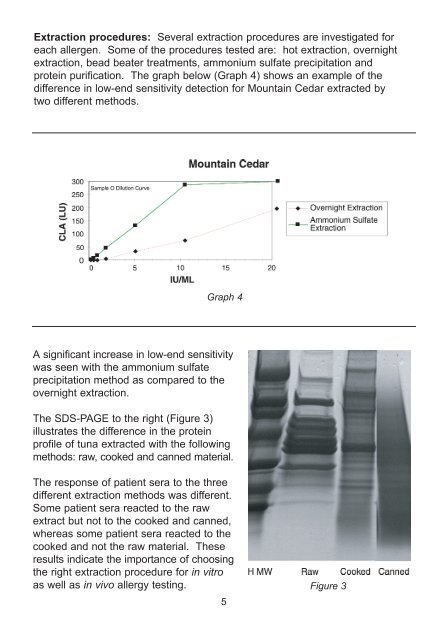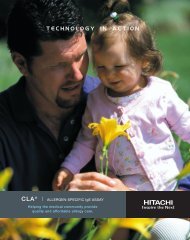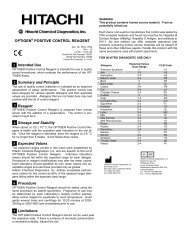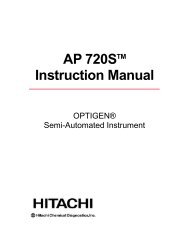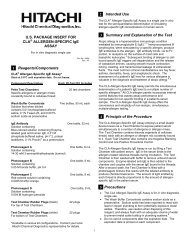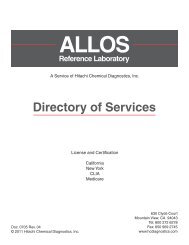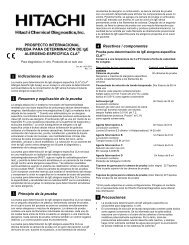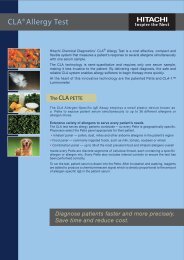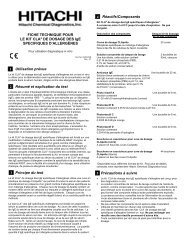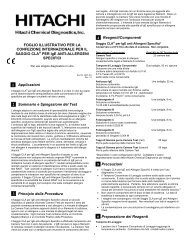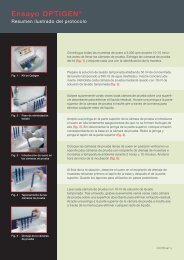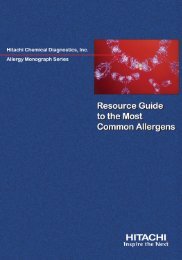Allergen Standardization Program - Hitachi Chemical Diagnostics
Allergen Standardization Program - Hitachi Chemical Diagnostics
Allergen Standardization Program - Hitachi Chemical Diagnostics
You also want an ePaper? Increase the reach of your titles
YUMPU automatically turns print PDFs into web optimized ePapers that Google loves.
Extraction procedures: Several extraction procedures are investigated for<br />
each allergen. Some of the procedures tested are: hot extraction, overnight<br />
extraction, bead beater treatments, ammonium sulfate precipitation and<br />
protein purification. The graph below (Graph 4) shows an example of the<br />
difference in low-end sensitivity detection for Mountain Cedar extracted by<br />
two different methods.<br />
Graph 4<br />
A significant increase in low-end sensitivity<br />
was seen with the ammonium sulfate<br />
precipitation method as compared to the<br />
overnight extraction.<br />
The SDS-PAGE to the right (Figure 3)<br />
illustrates the difference in the protein<br />
profile of tuna extracted with the following<br />
methods: raw, cooked and canned material.<br />
The response of patient sera to the three<br />
different extraction methods was different.<br />
Some patient sera reacted to the raw<br />
extract but not to the cooked and canned,<br />
whereas some patient sera reacted to the<br />
cooked and not the raw material. These<br />
results indicate the importance of choosing<br />
the right extraction procedure for in vitro<br />
as well as in vivo allergy testing.<br />
5<br />
Figure 3


